Last updated on April 19th, 2024 at 09:25 pm

Want a custom, coordinated look that is inexpensive? Use bedsheets. Yep, the same sheets you cuddle under at night can turn a bedroom from boring to stunning, creating a designer look at Walmart prices.
To coordinate with your bed, just buy extra sheet sets that either mix well or match. Use them to make pillows, drapes, dust ruffles, round table covers and more.
By Julie Lohmeier
Easy Ways to Decorate with Sheets
Sew Your Own Pillows

Buy pillow forms at any sewing or craft store. Measure the dimensions. Cut two pieces from your sheets with these dimensions. Sew seams around the sides (or use Stitch Witchery and a hot iron) remembering to sew with right sides together.
Leave half of one side for a square or rectangle pillow or 1/6 of the circumference of a round pillow open. Turn inside out. Stuff your pillow form into the pillow casing. Stitch the opening closed by hand.
For extra pizzazz, use piping, trims, or beads in the seam. Beginners may also wish to read How to Sew a Square Pillow or Sew a Tea Towel Pillow from a for more hints and tips.
Sewing Curtains and Swags
Curtains, Swags or Drapes
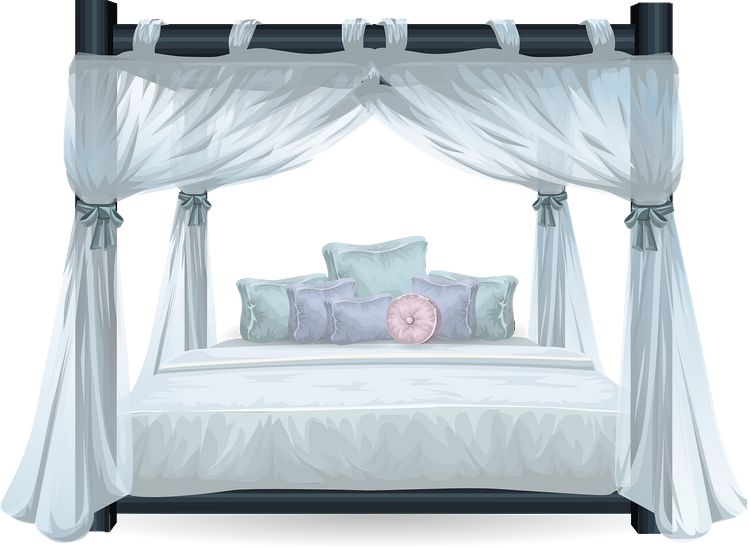
Swags are the easiest to make. Simply cut one width of the sheet about 24″ – 48″ tall – depending on how much fullness you want – whatever is left to hang on the sides will have to do. Hem both top and bottom by rolling 1″, folding in half, and stitching near
the second fold.
If you have wide window or you wish to have the swag fall further down the side of the window, you’ll need to do a bit more work, but it’s still fairly easy.
Measure your window width. Determine how long you want the swag to hang down the sides, then double this measurement. Add it to your width measurement. Add another 6″ – 12″ to allow soft draping across the top. Measure the width of your sheet. Compare it to the measurements you made previously of your window.
If your sheet is 54″ wide but you want a swag that’s 100″ wide, you’ll need to essentially cut two widths. Cut any extra widths as needed. The key for swags, if you need more than one width, is that you don’t want a seam in the center. Instead, you’ll want the full width of the window in one piece, then seam together the side pieces at the ends of this center piece. When you piece together patterns, try to match up the patterns between pieces. This may mean you need to cut your widths at different points across the sheet.
Hang the swag over a pole or in swag holders.
Valance and Curtain Panels
You can also sew a valance and panels. A gathered valance is easy. Measure your window width. You’ll want to cut widths from your sheet that is 50% to 100% wider than the window, seam together, matching patterns. So if your window is 40″, you’ll want your curtain to be 60″ – 80″ wide. You can sew together as many widths as you need as long as you match your pattern.
Decide the height of the valance. 15″ -18″ is standard so make the height that you cut from the sheet 40″ – 44″. If you want a small ruffle above the valance add 2″ – 4″ to the total above. Sew multiple widths together, right sides facing each other. Sew the top and bottom ends together with right sides facing each other.
Turn inside out and straighten. From the top seam, line pins 1″ – 2″ down from the top. Stitch along this line to create your ruffle. Then measure down 3½” and mark with pins. Stitch along this line to create your rod pocket. Put your curtain on the rod and hang.
See also Julie’s article, How to Sew a Quick and Easy Valance, Sew a Fishtail Valance, or Sew Simple Curtains and a Valance for Your Windows by Robin Hall.
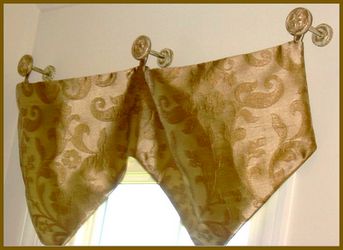
Panels are done much the same way.
Measure the length you want the panel to hang. Add 4-1/2″ to the length. Add an additional 2″ – 4″ if you want a ruffle at the top. Cut this length out of the LONG part of your sheet. You’ll probably want two panels. You’ll need each panel to be 50-100% more than half of the window width. That means that two panels together will also be 50-100% of your window width. You may be able to cut two panels from one sheet or you may need two sheets.
Ideally, you would make a full 3″ hem (add 4″ extra inches to your length measurement above if you do this hem), but for simplicity just make a simple shirt-tail hem at the bottom by marking 1″ off the bottom. Then turn half of this under. Stitch near the top of rolled over fabric. On the top, fold down 4-1/2″ from the top (5-1/2″ to 6-1/2″ if you want a ruffle). Of this folded over fabric, turn 1″ under. Stitch near the bottom where you folded the extra material underneath. From the very top of the panel, measure 1″ – 2″ (based on the size ruffle you wanted) and line pins. Stitch along this line to create your ruffle and your rod pocket. Put your panels on the rod.
Sewing a Dust Ruffle
Dust Ruffle
Take a plain sheet and lay it over your box springs. Mark around it 1/2 inch to 1″ (5/8″ is the standard seam width) bigger than the box springs on all four sides. Cut this out and make a shirt tail hem along one short side. Cut 9″ tall widths from your sheet (you’ll need the height of your bed plus 1″ if your bed is higher than standard).
You’ll need enough widths to go around two long sides and one short sides of the box springs cover you just cut. Stitch these widths together with rights sides facing each other. It is best to gather these widths onto to the box springs cover. To do so, you’ll want your total width of the cut sheet lengths to be 25% longer than the total measurements of the two long sides and one short side. Make a shirt-tail hem rolling up 1″ from the bottom of each sheet length, turning it under at 1/2 inch and then stitching near the end of the fold. Pin the cut sheet lengths to the box springs cover, gathering as you go. Again, you’ll want right sides of the fabric together as you sew. Flip over when done. Place on the bed. The short side with no dust ruffle goes against the head of the bed.
Round Table Cover
Make a circle wide enough to cover the table down to the floor. Measure from the floor on one side of the table, across the center of the table to floor on the other side. Add 2″. This is your diameter. Make a circle with this diameter. Make a shirt-tail hem rolling 1″ from the edge in half and then sewing down near the fold. Voila. You’re done.
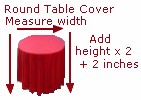
Variation: Make a floor length tablecloth from plain white sheets, then a shorter version in colored or patterned sheet material to go on top.
These directions may seem harder than they actually are, but with an hour or two and some matching and coordinating sheets, you can decorate an entire bedroom.
Shades and Blinds
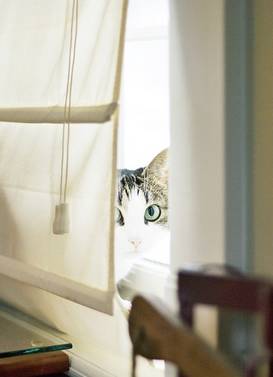
You can also make matching blinds using sheets, fusible interfacing, and Stitch Witchery(r) – no sewing. Buy a shade the proper width for your window. Cut the fusible interfacing the same width shade. For length make it the height of the window plus 10-12 inches. Measure and cut your fabric to be 1-1/4 inch wider than the fusible interfacing. Center the fabric over the interfacing and iron according to the directions. Turn under the ends on both side and iron down with Stitch Witchery(r). Fold up 2 inches from the bottom for your shade pull and affix with Stitch Witchery®. Remove the original shade and staple your new designer shade to cardboard pole. Be sure to hang on the proper side so that when you put it up the right side is showing. Hang your shade on the shade hardware.
Julie Lohmeier shares remodeling tips, home decorating ideas and other rants at myhomeredux.com. Copyright © 2006-2012 Julie Lohmeier All Rights Reserved
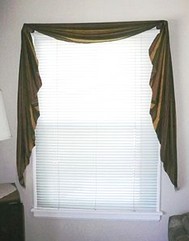

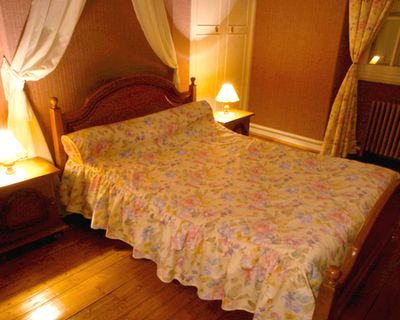


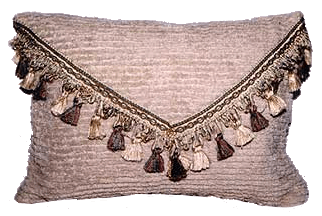
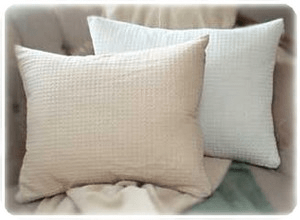
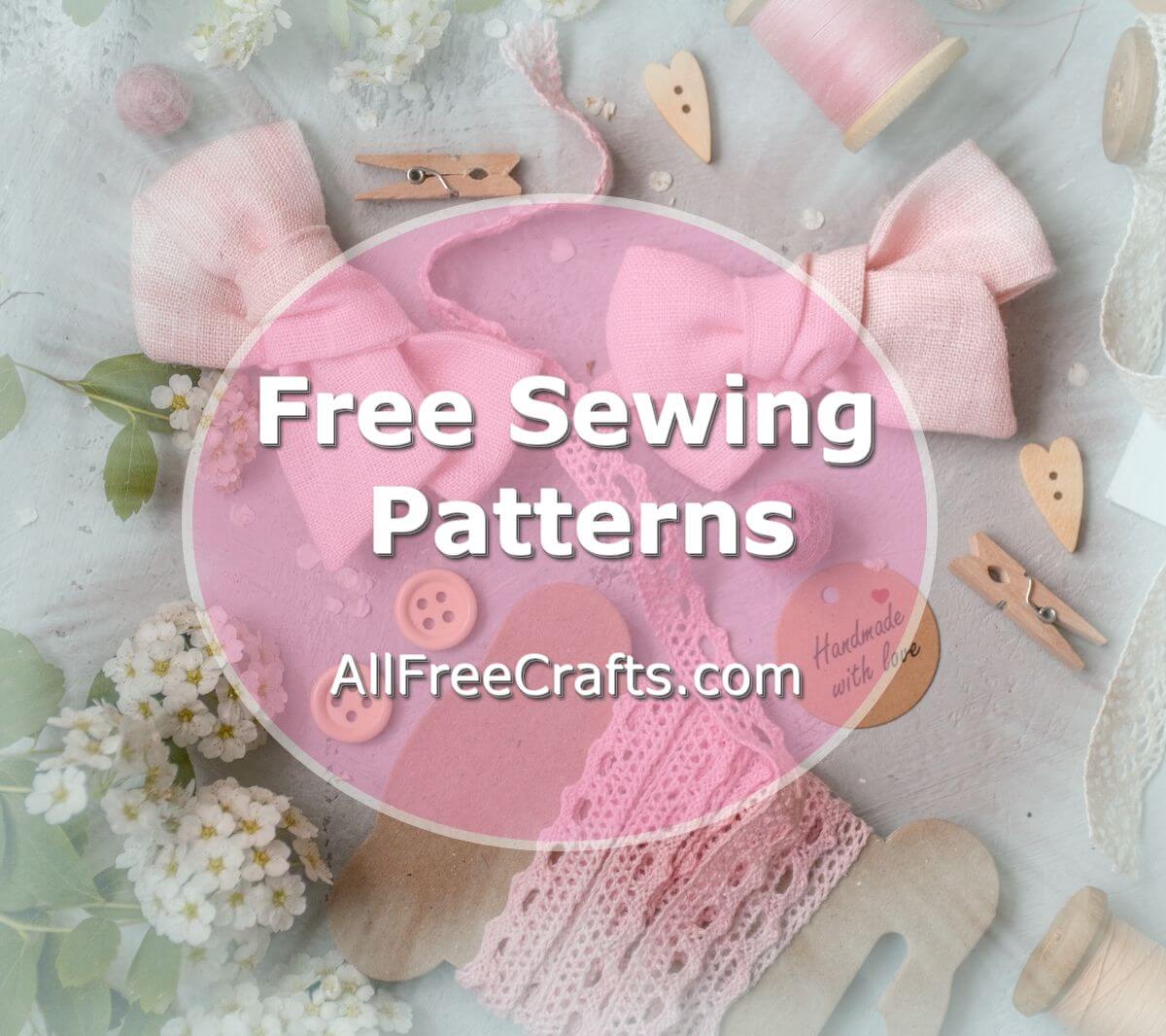
Leave a Reply